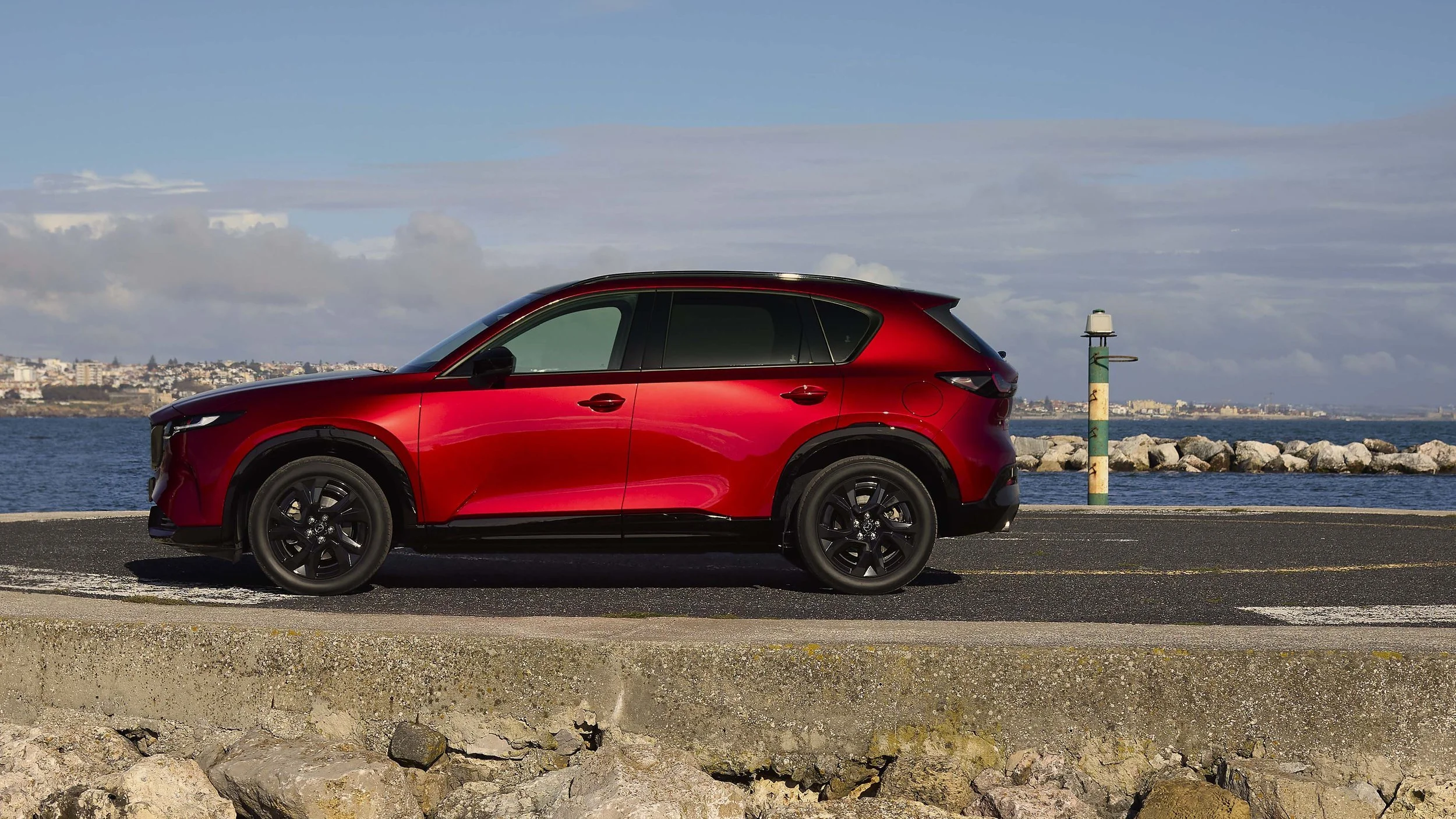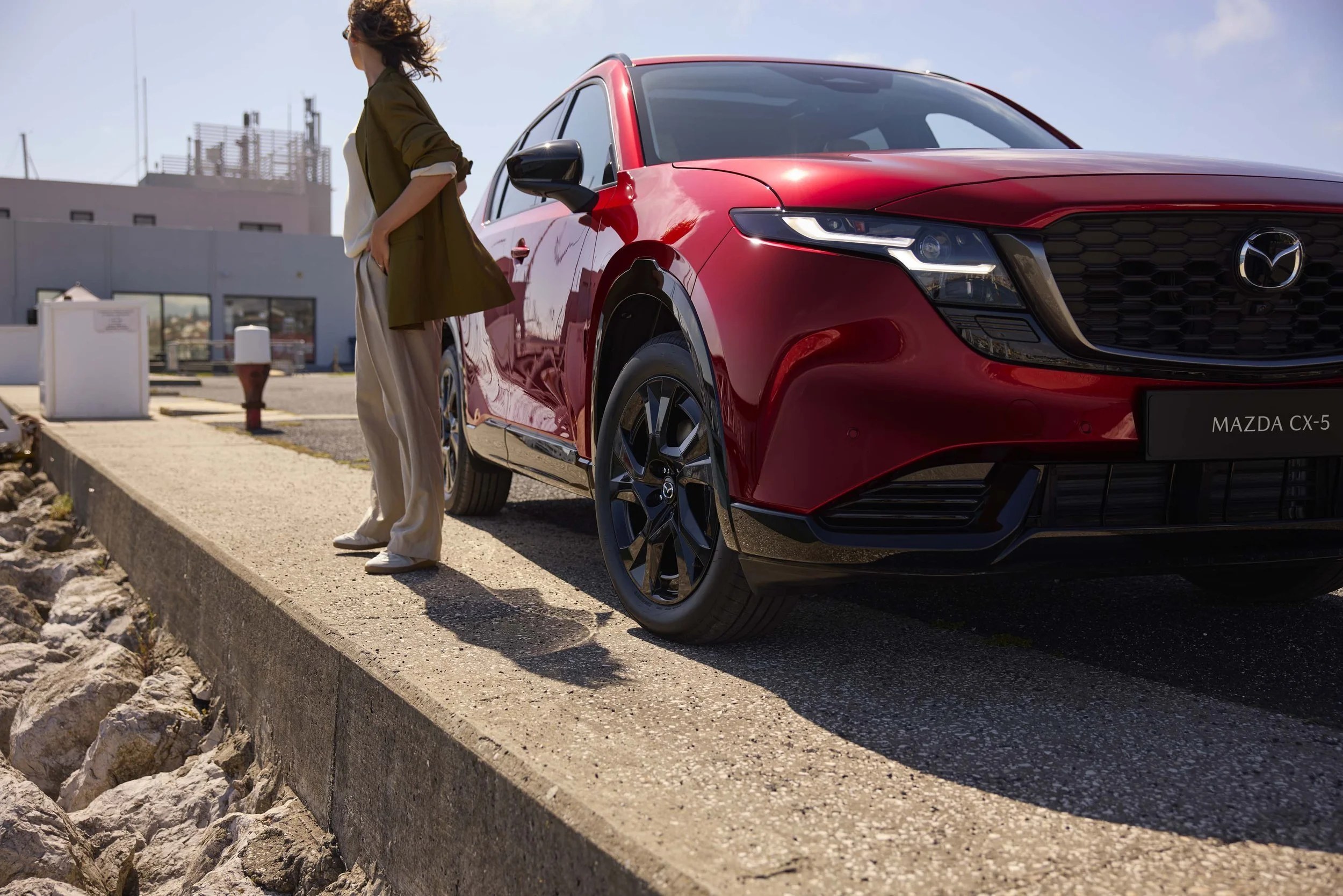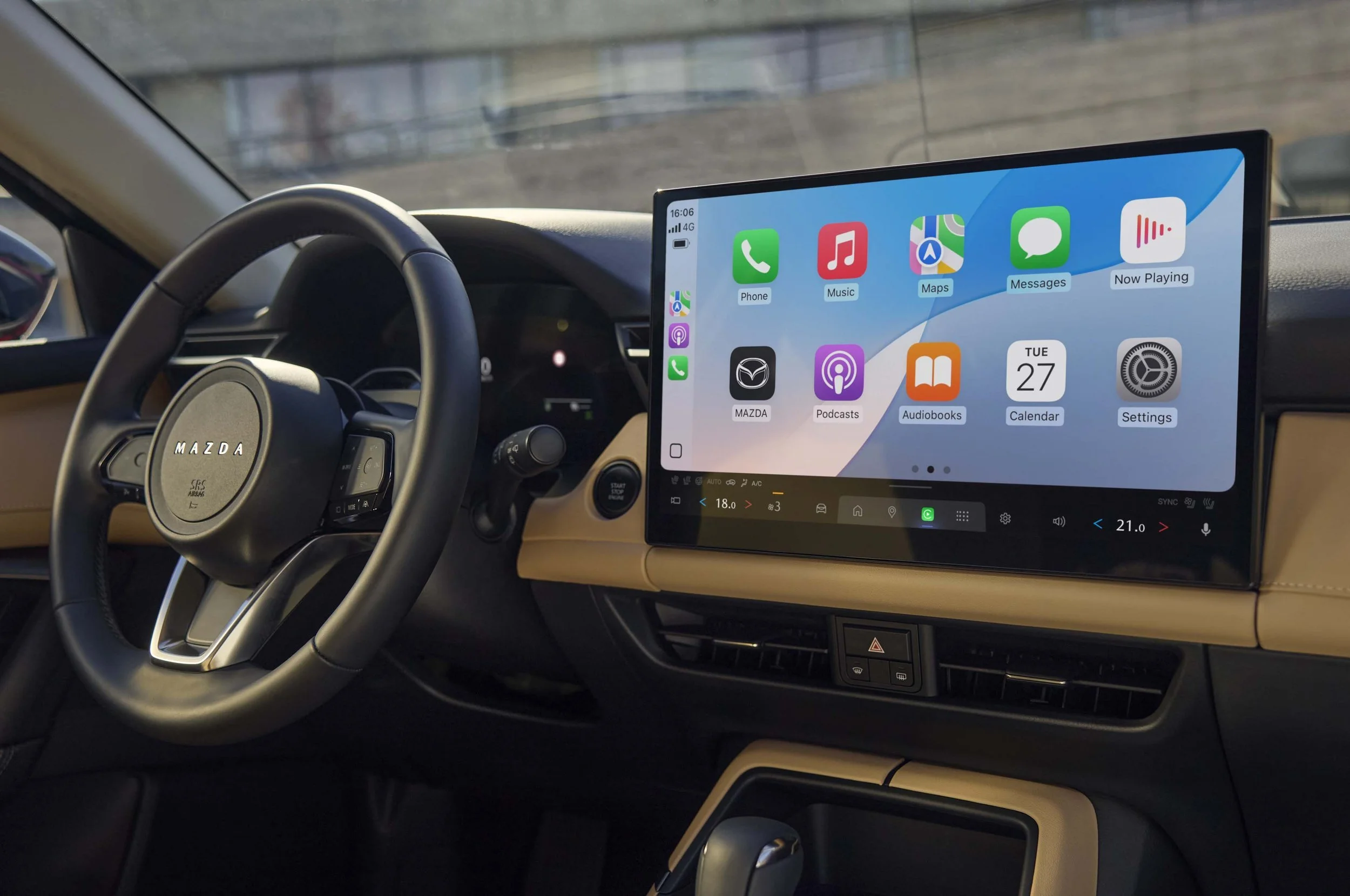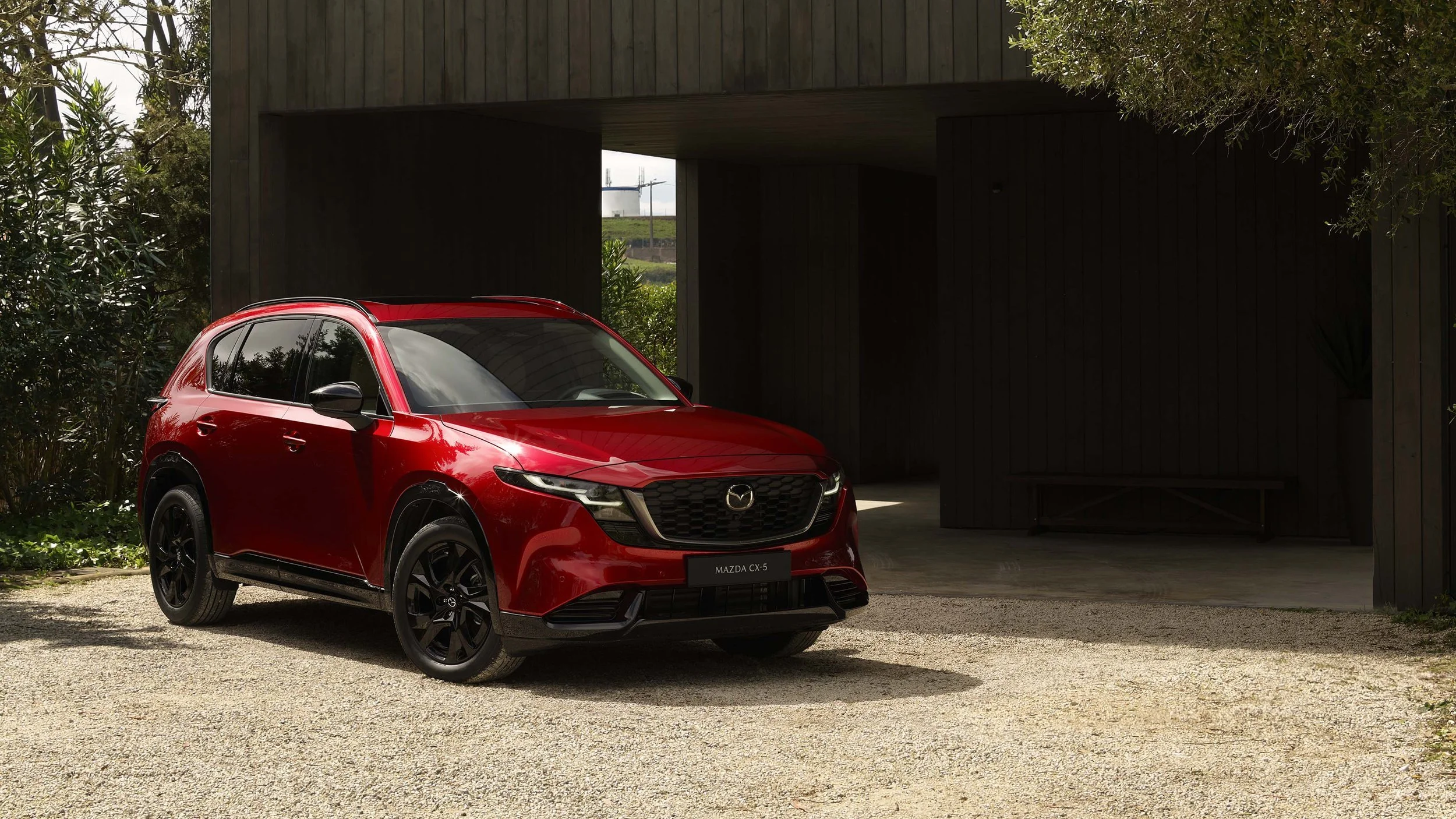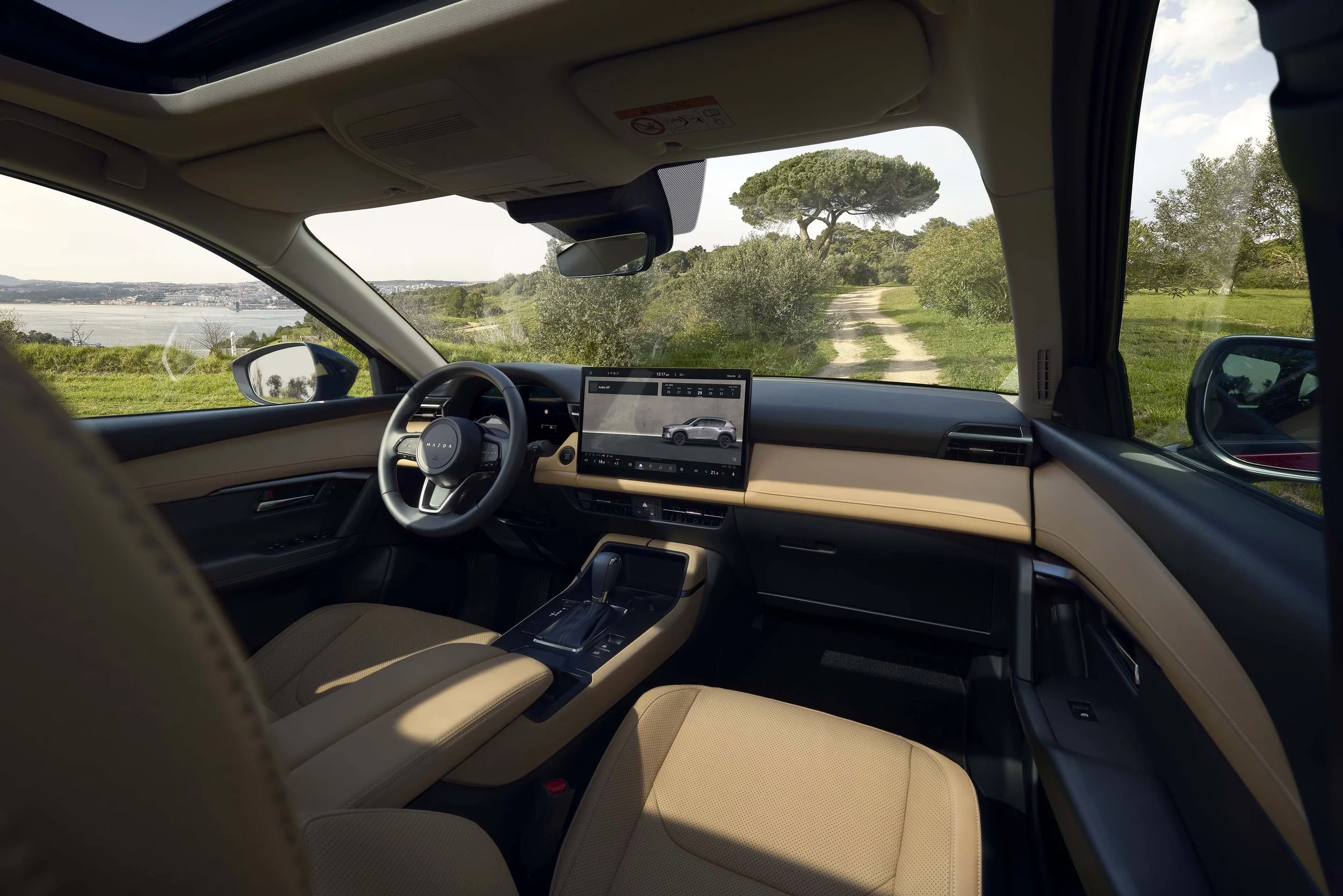LATEST NEWS
12 months until new CX-5, bigger wait for key hybrid
Richard Bosselman
July 11, 2025
In unveiling the new model, Hiroshima has made clear other markets have priority.
CONFIDENCE the current, long-serving CX-5 can sustain Kiwi interest for another 12 months or so has been reiterated by the national distributor today.
Mazda New Zealand’s optimism the current car, which dates back to 2016 so is already looking long in the tooth by segment standards, still has the chops to compete in the fiercely-fought sports utility segment has been shared again in wake of the new product’s international reveal.
The unveiling reveals Hiroshima has determined on making its most important global model a larger car, to point of it now being almost the same size as the CX-60.
Running a highly familiar styling, it stacks in more technology, including the controversial feature of a touch screen with activation previously enabled by a rotary dial and buttons, atop a re-engineered edition of the the current platform and retaining multi-link independent rear suspension.
Powertrain-wise, it starts as it will leave off. The car is ultimately set to be the first with a new SkyActiv Z hybrid powertrain that would rival the hybrid in the category-dominating Toyota RAV4 and is deemed vital to Mazda’s future. But that won’t happen until at least the end of 2027.
In the interim it will will continue with the familiar G25 2.5-litre petrol four-cylinder engine that has been a primary choice in the current NZ range for some time.
In showing off the car, Hiroshima has also made clear the international release timeline and it’s not good news for Kiwis in a hurry to change over.
Mazda’s schedule this time prioritises Europe and North America; the first will start seeing the car before end of this year and the next is set for start of 2026 rollout.
New Zealand is much further down the line, with expectation being that stock will not be be available for at least another 12 months. That appears to put us several months behind Australia, where a first half introduction is being suggested.
“The exact timing is still being finalised, however we are working towards the second half of 2026 … earlier in the second half, rather than later,” Mazda New Zealand product and communications manager Paul Sherley said.
“You’ll appreciate we are therefore, still some way from confirming details equipment levels and pricing.”
Will the new car now out in the open, won’t there be risk existing owners will prefer to wait rather than keep buying into the current model?
Sherley is confident the car as we now have it still has the goods to holds its historic position as the best-selling Mazda here, accounting for 40 percent of annual volume.
“CX-5 remains a core part of the Mazda range, and we have seen its popularity with customers remain constant over many years.
“While we appreciate the announcement of the 2026 CX-5 will have some customers choosing to wait for the new model, we are comfortable with the current CX-5 continuing to be a favourite in our range until its arrival.”
Last year’s revisions to current CX-5 have been signalled as being the final amendments to a car underwent major update in 2021.
The replacement car is the third generation, but perhaps might stand to be easier identified from the incumbent more because of its dimension enhancement than due to the styling changes.
At 4690mm long, 1860mm wide and 1695mm tall, it’s larger in every key metric, to point it almost apes the CX-60, which is up to 4745mm long, 1890mm wide and no more than 1685mm tall.
With CX-5 the wheels have been pushed to the very edges with the aim of increasing interior room; almost all of its extra length has gone into its 115mm longer wheelbase.
In respect to the shape, Mazda has determined that the design direction that works now doesn’t demand extensive change going forward. It respect to the new car, it’s references are from Japanese culture. Yohaku means the beauty of empty space. Sori means curves with poise and balance. Utsuroi describes the delicate play between light and shadow.
The interior represents a big change in respect to the control delivery. The key feature is a new Google-based infotainment system mounted high on the dash, with 12.9in or 15.6in touchscreens, depending on trim level.
The system drops the easy-to-use physical rotary controller you’ll find in the current car, plus the CX-60 and CX-90.
All functions, including for the ventilation, are now engaged as haptic prompts. It’s likely to be a controversial step; many other brands - Volkswagen being a classic example - have tried, and regressed from, this approach because drivers found it too distracting.
New CX-5 also has a 10.25in digital instrument cluster, and a head-up display is available to place the most important driving information in a driver’s line of sight. There’s also wireless phone charging, wireless Apple CarPlay and Android Auto, plus seven selectable colours of ambient lighting.
As well as being more spacious for passengers, the new CX-5 can carry more luggage. At 583 litres up to the load cover, the boot has grown by 61 litres. The rear seatbacks split and fold in a 40/20/40 arrangement.
Trim levels for Europe are Prime-Line, Centre-Line, Exclusive-Line and Homura, the latter of which brings the biggest infotainment screen and adds adaptive LED headlights, plus hands-free operation of the electric tailgate.
As per the current choices, the base car runs on 17 inch wheels and the others are on 19s.
Will the 2.5-litre engine and six-speed automatic be further enhanced from current state? It’s a relevant question, yet to be fully unwrapped.
The engine as we have it now makes 170kW/420N. Mazda has yet to say how much heavier the new car is. Given the upsize, it surely has to weigh more.
The make says in best application - so, the front drive that continues as an option to all wheel drive - the gen three car emits 157 grams per kilometre of CO2, officially averages 7.3 litres per 100km and is good for 0-100kmh in 10.5 seconds. That emissions figure is slightly better than the present optimal, the fuel economy is about the same.
Also fueling probability that the 2.5 has reached end of development is Mazda’s acknowledgement that it has directed all available funding to getting SkyActiv Z into production.
The new engine sets out to meet stringent Euro7 emissions regulations and is designed around the idea of 'Lambda 1’, or keeping an ideal fuel-air mixture at all parts of the engine's power band, maximising efficiency and minimising emissions.
As well as being for CX-5, this technology will also introduce on the six-cylinder petrol and four-cylinder petrol hybrid engines that place in the CX-60, CX-80 and CX-90.
It will become more imperative for Mazda NZ in coming years, as CO2 fleet count averages required by the Clean Car Standard tighten. At end of this year, too, NZ and Australia will simultaneously adopt the Euro6d emissions standard.
Mazda Japan has its revised Lean Asset Strategy that will radically alter previous plans aimed at speeding up its switch to EVs.
As part of the new plan, the brand has slashed research and development costs through more joint ventures and partnerships with other car-makers while improving production efficiency productivity.
Mazda intends to follow the likes of Toyota and continue to offer a mix of internal combustion, hybrid and battery-electric models going forward.
Instead of building dedicated factories for electric cars, Mazda said recently that it will reduce costs by up to 85 percent by building EVs on the same existing production lines as its hybrid and combustion-powered cars.

